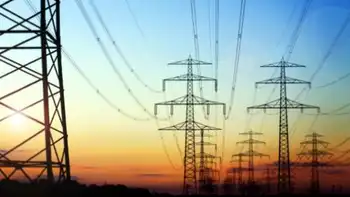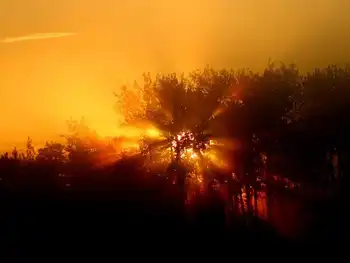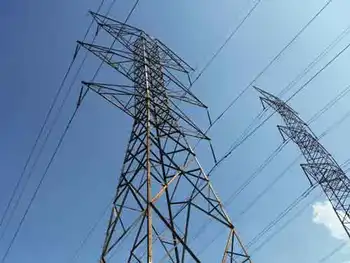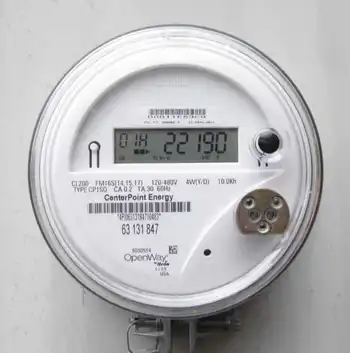Decision on Cape Cod wind project due soon
Not one of the countrys halfdozen or so offshore wind proposals has entered the arduous review the Cape Wind project is just finishing. Cape Winds developers say the earliest they could begin harnessing the breezes of Nantucket Sound is 2012.
The nations onshore wind industry is the worlds largest, but higher upfront costs, tougher technological challenges and environmental concerns have held back the development of offshore wind farms.
Offshore wind is especially important in areas like the Northeast, which lack major landbased winds but are mandated by state rules to use more renewables. Developers promise jobs and a plentiful energy source that emits no greenhouse gas emissions. They say there is enough wind offshore to power the entire country — twice over.
Theres a vast ocean that can be tapped right now, says Jeremy Firestone, an ocean policy professor at the University of Delaware. But, you know, weve got to do it.
Denmark installed the worlds first offshore wind turbine 20 years ago. As the U.S. lags behind Europe, and now China, offshore wind technology and manufacturing jobs get entrenched elsewhere, Firestone says.
General Electric recently announced a $450 million expansion of its European offshore wind turbine business. China plans to begin operating its first commercial offshore wind farm off Shanghai by May 1 and has several other projects planned.
The Department of Energy envisions 54 gigawatts in U.S. offshore wind by 2030, or about 4 percent of the countrys electric generating capacity. The U.S. already produces 35 gigawatts of power from onshore wind. One gigawatt of wind powers about 300,000 homes.
The Cape Wind project, proposed in 2001, aims to provide up to threequarters of the Capes power. But opposition has been relentless.
Critics say it would threaten animal life and mar historic vistas, including the view from the Kennedy family compound in Hyannisport. The late Sen. Edward Kennedy called the project a special interest giveaway and was pressing his opposition until weeks before his death last August.
Two Wampanoag Indian tribes also object to the project, saying it would destroy sacred rituals near Nantucket Sound and destroy longsubmerged tribal burial grounds.
This month, Interior Secretary Ken Salazar will make the final call. President Obama has pushed renewables and his recent decision to expand offshore drilling indicates a willingness to tap oceanbased energy sources. But Obama, who was close to Sen. Kennedy, has never spoken publicly about Cape Wind.
Offshore wind has had strong political backing in Northeast states, such as Massachusetts, Delaware and Rhode Island, where governors have pushed utilities to buy the power. In New Jersey, former Gov. John Corzine also set ambitious offshore wind goals.
Steven Kopits, an analyst with DouglasWestwood energy consultants, says if Salazar kills the industrys most promising proposal in Cape Wind, crucial political support could wither. It would gut the industry, he says.
Peter Mandelstam, president of offshore wind developer NRG Bluewater, a division of utility NRG Energy Inc., says U.S. projects have solid backing from state governments and a successful European model to give investors confidence.
The industry is much more than Cape Wind now, Mandelstam says. It is a series of strong projects, each of which have their own path to success.
Major U.S. proposals include a project in Texas state waters, off Galveston, which could see faster permitting because it doesnt need to go through federal review. But most are concentrated above Maryland in the East Coasts northern half, including Bluewater projects in Delaware and New Jersey.
Each state in the Northeast requires utilities to get a rising percentage of power from renewables over the next several years, such as the 15 percent requirement in Massachusetts by 2020. Many are relying on offshore wind to help them do it.
Todays turbines cant be built beyond 50 meters depth, which is no problem at various East and Gulf Coast sites, though it shuts out the West Coast and its steeply descending sea floors.
The Northeasts heavy coastal population also makes offshore wind a good option because costs increase the further electricity travels over transmission lines.
Last year, the federal government released new rules for permitting offshore projects. Theyre intended to help companies avoid the twisting route Cape Wind has taken. But officials estimate it will still take 7 1/2 years to get a federal permit. Developers face a web of local considerations along the way, too, including maritime traffic and ecological effects.
The path is too long, Mandelstam says.
The high upfront costs of building and maintaining massive turbines at sea help make it significantly more expensive than onshore wind. For instance, the Department of Energy says building an offshore plant where wind power density ranges between 400 and 500 watts per square meter costs about $120 per megawatt hour, compared to about $80 for a landbased wind plant.
Cape Wind officials wont disclose the projects price, but Kopits estimates its at least $2 billion.
Offshore developers need substantial subsidies, such as tax and production credits, and developers in Europe benefit from far more government help.
The expense puts the power at a premium that not everyone is willing to pay. This month, Rhode Island regulators rejected a deal between a local utility and developer Deepwater Wind, citing a high price per kilowatt hour. Only one other project, Bluewaters project in Delaware, has a power purchase deal, considered crucial to investors.
With natural gas prices dropping considerably from five years ago, offshore wind prices look even more pricey by comparison.
Advocates say focusing on todays prices is shortsighted, arguing that free offshore wind is a good longterm bet compared to fossil fuels, with their unstable and inevitably increasing prices.
Costs will go down, says Walt Musial, an engineer at the National Renewable Energy Laboratory. We may have some slow starts... and we may have some pushback, but eventually I think were going to see offshore wind grow.
Related News

Electric Ferries Power Up B.C. with CIB Help
VANCOUVER - British Columbia is taking a significant step towards a cleaner transportation future with the electrification of its ferry fleet. BC Ferries, the province's ferry operator, has secured a $75 million loan from the Canada Infrastructure Bank (CIB) to fund the purchase of four zero-emission ferries and the necessary charging infrastructure.
This marks a turning point for BC Ferries, which currently operates a fleet reliant on diesel fuel. The new Island-class electric ferries will be deployed on shorter routes, replacing existing diesel-hybrid vessels. These hybrid ferries will then be redeployed on routes that haven't yet been converted to electric,…





